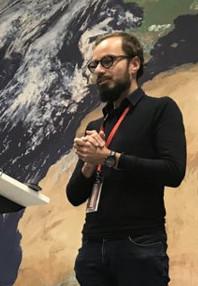Introduction to Electronically Assisted Astronomy with automated observation stations
PosterTeaching astronomy as part of other subjects in secondary schools – astronomy as a “gateway science”
4th Shaw-IAU Workshop
Wednesday Nov. 16, 2022
UTC: 8 a.m. - 9:30 a.m. America/Chicago: 2 a.m.- 3:30 a.m.
, UTC: 8 p.m. - 9:30 p.m. America/Chicago: 2 p.m.- 3:30 p.m.
, Thursday Nov. 17, 2022
UTC: 10 a.m. - 11:30 a.m. America/Chicago: 4 a.m.- 5:30 a.m.
, UTC: 1 p.m. - 2:30 p.m. America/Chicago: 7 a.m.- 8:30 a.m.
Electronically Assisted Astronomy consists in capturing images with a camera coupled to a telescope and then applying lightweight processing to display views of celestial objects. During the MILAN research project (funded by FNR in Luxembourg), we use automated stations of VAONIS for stargazing sessions, helping greatly to arouse the curiosity around astronomy. Firstly, participants can learn how to localize and then observe objects like galaxies or nebulae. Secondly, playing with settings like exposure time shows how image acquisition works. Thirdly, displayed live views continuously improve as data is accumulated, allowing to discuss the basics of image processing (SNR, alignment, stacking). Finally, participants can use raw data to practice image edition trough dedicated software.
Biography:
For almost 19 years, Olivier is involved into projects about Artificial Intelligence, Computer Science and Decision Support. Convinced that recent innovations in Deep Learning and Automated Machine Learning may create positive value if they are adapted and applied with seriousness and responsibility, Olivier continues to support public entities and private companies to go further in research and development while publishing academic papers for sharing knowledge and experience with the community. For three years, Olivier has been leading research projects related to artificial intelligence and astronomy.
Click here for a copy of this poster (PDF file 1.19 MB)





